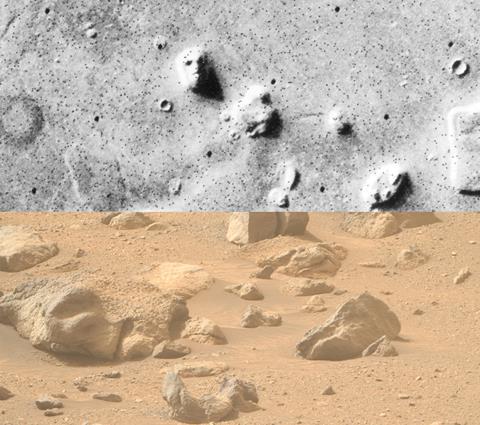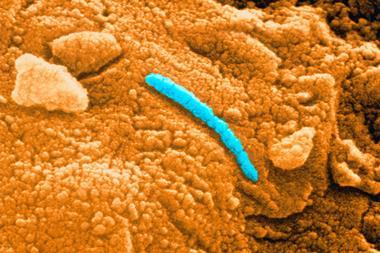Sent to search for signs of ancient microbial life, Nasa’s Perseverance rover landed in the Jezero crater just north of Mars’s equator in February 2021. Since then, instruments on board Perseverance have been busy gathering samples and data from the red planet. Among them was an image of Martian rocks, taken with its right Mastcam-Z camera, that looks very much like a decapitated head, bringing back memories of the infamous ‘face on Mars’ picture captured by Nasa’s Viking 1 mission in 1976.

Research we reported on this week, however, brings into question slightly more scientific interpretations of Perseverence’s data haul. Luminescence and Raman spectra collected by the rover’s Sherloc instrument suggested it might have detected a varied array of aromatic organic molecules in the Jezero crater. Members of the same team now think those spectral responses were produced by cerium ions. It highlights how efforts to detect extraterrestrial life are fraught with the potential for false positives.
Last year, Philip Ball explained how morphological differences are insufficient to reliably distinguish living and non-living systems. Writing in the Journal of the Geological Society in 2021, Sean McMahon and Julie Cosmidis point out other potentially ambiguous biosignatures, including how organic molecules can passively adsorb onto mineral surfaces and spontaneously polymerise into macromolecules that resemble proteins and nucleic acids. They highlighted the importance of testing abiotic null hypotheses when evaluating biosignatures.
As well as analysing samples with its on-board instruments, Perseverance has also filled titanium tubes with mainly rock samples, half of which it is keeping in its belly and the other half it has deposited as back-ups at precisely-mapped locations on the Martian surface. The plan was that a Nasa sample return mission would have retrieved at least some of those samples by 2033. Spiralling costs, however, means Nasa is now examining alternative cheaper proposals, including ones from private space companies. While analysing those samples on Earth with advanced and potentially yet-to-be-invented techniques won’t guarantee us firm evidence of past or present life on Mars, it significantly boosts our chances.

















No comments yet